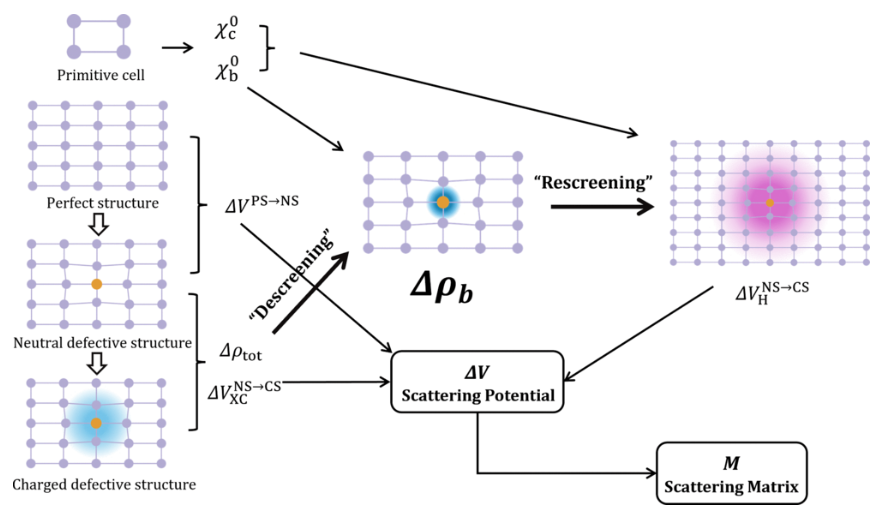Defects are unavoidable in real materials and can strongly influence properties such as electrical conductivity and electron dynamics. Until now, researchers had to rely on rough approximations to describe the scattering of charged defects, which limits the understanding and predictions of materials’ properties. Yuanyue Liu’s group at TMI of UT Austin recently developed a new way to accurately predict how charged defects in crystals scatter electrons.
This method removes these approximations and provides a more accurate description of defect scattering, opening the door to more reliable predictions and better design of materials for future electronics and energy technologies. As an example, they discovered new insights into how temperature affects the electrical transport in defective materials.
This work was published in Physical Review Letters. The authors include Rongjing Guo and Kwangrae Kim, both Materials Science & Engineering graduate students, and Dr. Zhongcan Xiao, all in Dr. Liu's group.
In creating and testing this method, the team also discovered that these defects can have a much bigger impact at low temperatures than previously thought. This new discovery can provide new insights into the transport mechanism, which can help refine the conditions needed to create materials and improve the design of future electronic devices.
Read more in their article, "Accurate Ab Initio Method for Charged Defect Scattering," in Physical Review Letters.

